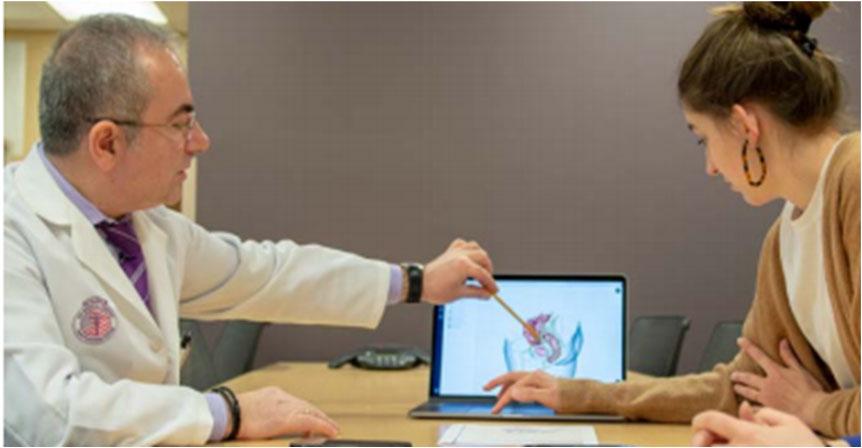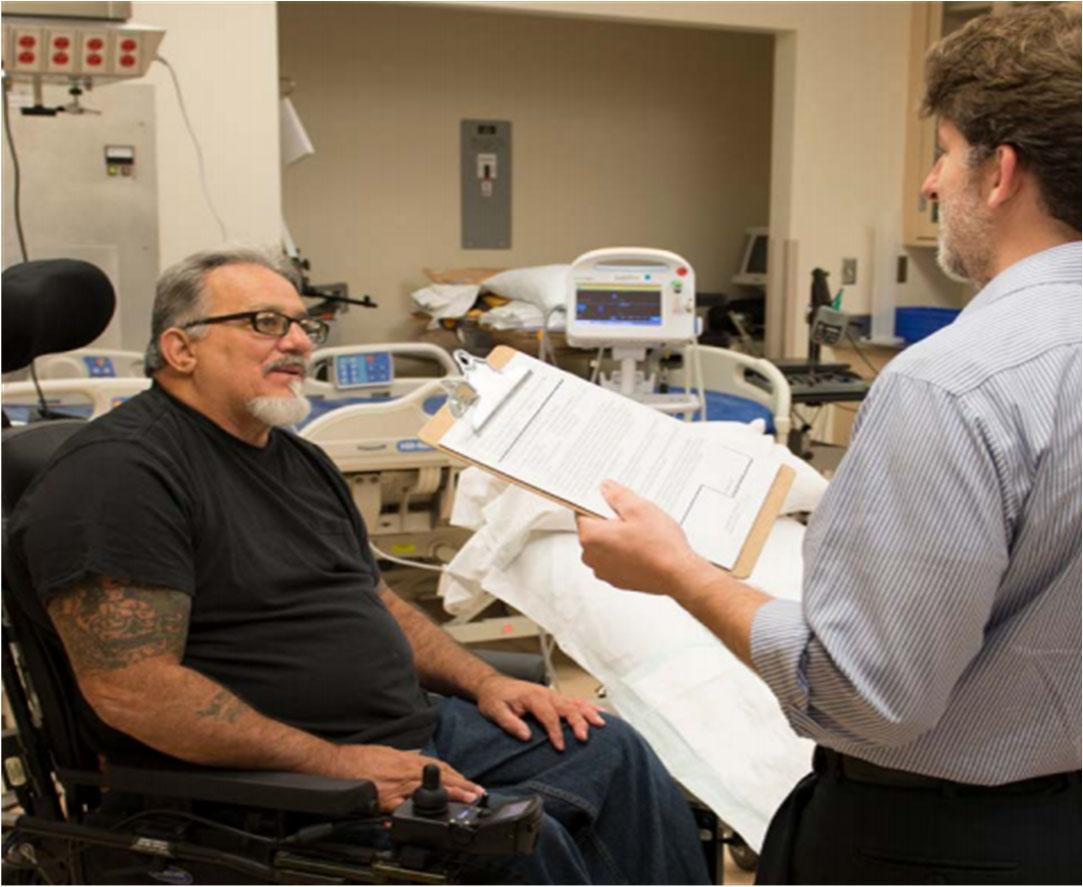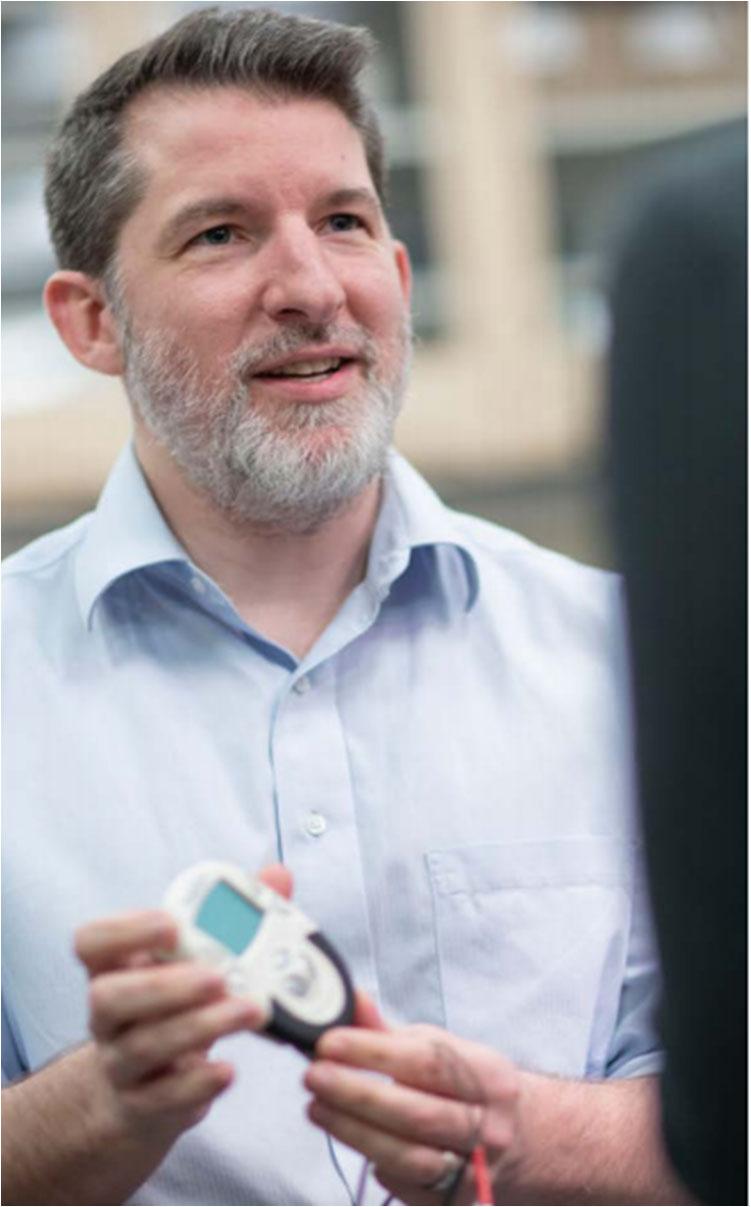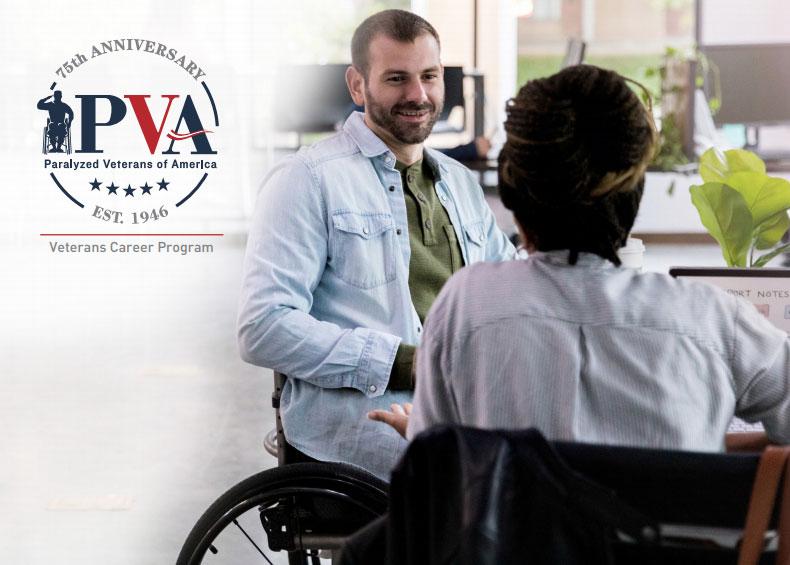
8 minute read
Cleveland FES Center SCI Article
B UCKEYE B ANNER P AGE 9
Improving the Lives of People with SCI
Advertisement
Cleveland FES Center
When Dennis Bourbeau, PhD, contemplated what issues he would like to focus on with his training in neural and electrical engineering, he had one overarching goal – to make a difference in people’s lives. “I was compelled in my career to go into something where I would have a big impact,” says Bourbeau, an investigator at the FES Center. His research focuses on developing approaches using electrical stimulation to restore pelvic autonomic functions – such as bladder, bowel and sexual function – lost to spinal cord injury (SCI) and other neurological disorders. “Reading anecdotes and literature reports on the consequences of bladder, bowel and sexual dysfunction was very motivating and inspiring,” recalls Bourbeau. “I realized that there was not a lot of work in that area, but at the same time it was a top priority for people with SCI. It became a natural call to action for me.”
Moving the Needle of Pelvic Autonomic Functions
While many researchers are making important scientific discoveries in the area of pelvic dysfunction, such as understanding what happens to the bladder after SCI, Bourbeau hopes to make a clinical impact through translational research. Working predominantly with electrical stimulation devices, Bourbeau’s aim is improve the quality of life, independence and dignity of patients with SCI and other neurological disorders. Bourbeau’s team currently has four active studies related to bladder and bowel function.
Project One – Improving Bladder Incontinence
After SCI, patients have neurogenic destrusor overactivity: The bladder muscle involuntarily contracts, which increases bladder pressure and decreases the amount of urine the bladder can hold. This, in turn, leads to feelings of bladder urgency and urinary incontinence. In this study, the researchers are stimulating the genital nerve branch of the pudendal nerve to inhibit bladder activity and improve urinary incontinence. “If you hit the right nerve with the right electrical pattern, you can modulate an inhibitory reflex to turn the muscle off,” says Bourbeau. Using automated closed loop stimulation with a sophisticated algorithm developed by a collaborator, Bourbeau’s team is examining bladder pressure to answer several key questions: Do they need to use one sensor or two? Can the system determine in real-time if there is a bladder contraction to inhibit before incontinence occurs? If the system works, what would an implanted sensor look like?
Project Two – Improving Bladder Emptying
Patients with SCI may also experience detrusorsphincter dyssynergia – essentially mixed signals between the bladder and urethral sphincters. This causes pressure to build in the bladder, leading to urine backup in the kidneys. The team is researching whether they can turn off the signal going to the urethral sphincters so patients don’t require catheters, while simultaneously activating the bladder. In a new study, Bourbeau’s group is implanting electrodes at the sacral spinal cord to inhibit bladder activity. “If there is an action potential coming down that neuron and we apply the right electrical pattern in a certain spot, the action potential will be blocked,” says Bourbeau. “We think of it as an electrical version of a chemical block, like dental anesthetic injections. With electrical stimulation, the block is only there as needed, then it goes away.” The team is currently working on approval from the U.S. Food and Drug Administration to test the pattern to inhibit or block nerve activity.
Project Three – Improving Bowel Function
A third study involves testing functional electrical stimulation to increase colonic motility and improve control of bowel function. The movement of stool within the colon is significantly slowed after SCI, which can cause constipation and a host of complications associated with constipation. The aim of Bourbeau’s research in this area is to understand where to apply electrical stimulation to achieve bowel motility, what nerves to target, what electrical patterns work best, and why this approach to improve bowel function is effective or not. The team is currently testing a minimally invasive approach in human subjects, inserting an electrode into the rectum to ascertain whether or not it stimulates the bowels to move. “It’s a safe way to see if the system has potential, and, if so, what would an implanted version look like?” says Bourbeau. “This project is getting us onto the map with bowel function.”
B UCKEYE B ANNER P AGE 10
Improving….continued
Study Four—Developing Wireless Systems
Partnering with Dr. Margot Damaser and her team, Bourbeau’s team is developing wireless bladder and pressure sensors to understand what’s happening in the bladder and bowel. “Right now, we are developing them as research tools, but the logical next step once they are working is to then develop them to the point of clinical translation,” says Bourbeau.
Getting Input from the Real Stakeholders
Although Bourbeau breaks down his research projects into different functions – bladder and bowel – he frames his work around the whole person and what would improve overall quality of life. “The hard work at this point is not the scientific discovery; it’s the translation,” says Bourbeau. “What’s actually going to work for a person with SCI? What is feasible and effective?” Bourbeau partners with a host of researchers and clinicians to answer these questions, including fellow FES investigator Ken Gustafson, PhD; MetroHealth physicians Robert Geertman, MD, PhD, and Carvell Nyugen, MD; and Margot Damaser, PhD from Cleveland Clinic. He also teams with several members of the Veteran’s Administration across the country, including Steven Brose, DO, Graham Creasey, MD, Steve Majerus, PhD, and James Wilson, DO. While clinical and research expertise are critical, input from the patients themselves is equally important to Bourbeau’s endeavors. “One of the things we are trying to improve in our lab – and in the field in general – is bringing in these other stakeholders and being smart about how we conduct translational research,” he says. “We want good relationships between the PhDs and the MDs, but we also want to hear from people with SCI.”
For instance, if a research project shows that stimulation causes increased bladder pressure during contractions, what does that mean to the patient? “If I’m living with SCI, I probably don’t care about that. I care about whether I still need a catheter and if I’m still having incontinence,” says Bourbeau. “What is the lived experience going to be?”
During the summer of 2018, Bourbeau and his peers conducted a survey of people with SCI asking about how they currently manage bladder and bowel functions and what their priorities are for regaining function. They also asked about attitudes toward nerve stimulation devices. “We want to make sure that if we’re developing a host of devices, pharmalogics and biologics for improving function that they will be acceptable,” says Bourbeau. “I can tell you if they are effective, but people with SCI need to tell me if they are willing to use them.”
In the end, he says, it’s all about the patient’s lifestyle and values. That’s what propelled Bourbeau into the field years ago and what continues to motivate his research today.


B UCKEYE B ANNER P AGE 11
The Veterans Career Program
The Paralyzed Veterans of America (PVA) has recently unveiled the new name of their employment program. Veterans Career Program, which is formerly referred to as Paving Access for Veterans Employment or PAVE, will continue offering one-on-one support to members of the veteran community. The Veterans Career Program focuses on those with catastrophic injuries or other barriers, to help them find meaningful employment, education, and volunteer opportunities.
“There is no better time than today to celebrate our rich history and formally announce the new name of our employment program,” said David Zurfluh, PVA national president. “Year after year, PVA strives to better serve our nation’s veterans, their families and caregivers by helping them live more independently and easing the challenges of everyday life. Together, with our partners and supporters, we are making a difference and improving lives through invaluable programs, like our Veterans Career Program. While the name may be different, rest assured, the quality, services, and assistance it provides remain untouched. As we enter our 75th year, we look forward to continuing to be a partner for life through our Veterans Career Program.”
PVA initiated the PAVE Program in 2007 to ensure PVA members, veterans with catastrophic disabilities, their spouses, and caregivers have access to employment and educational and volunteer opportunities. The program consists of a team of vocational rehabilitation counselors and employment analysts that will help you: 1. Set goals to achieve your career objective 2. Learn how to craft an effective
resume 3. Develop effective interview and communication skills 4. Identify networking opportunities 5. Receive one-on-one support from an expert vocational rehabilitation counselor Since the program began, it has guided nearly 5,000 members of the veteran community to meaningful careers. One of the goals of this newly named program is to remain a partner for life. The counselors will be there for you to assist in reaching your next career goal.
The program extended its reach with the launch of PVA Veterans Career Live, (formerly known as PAVE Connect), an online engagement initiative for veterans with disabilities that prevent them from fully participating in traditional hiring events. Through a series of informal virtual sessions, program participants learn directly from career experts, and network with employers and industry experts.
If you would like additional information about the Veterans Career Program, please visit PVA.org/VeteransCareerProgram or contact your local National Service Officer.
by Aaron Stevens Senior Benefits Advocate
Sincerely, Aaron Stevens
Senior Benefits Advocate E: Aarons@pva.org








